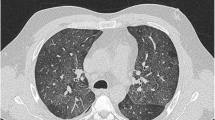Abstract
A head-only exposure assembly was used for exposing mice to vapours of sulphur mustard (SM). The respiration was monitored using an on-line computer program, capable of recognizing the breathing pattern as sensory irritation, airflow limitation and pulmonary irritation. SM was dissolved in acetone and vapourized using a compressed air nebulizer. Mice were exposed to the vapours (8.5, 16.9, 21.3, 26.8, 42.3 and 84.7 mg/m3) for 1h in a body plethysmograph fitted with a 20-gauge needle and a microphone for sensing the respiratory flow signals. The signals were amplified, digitized and integrated to give tidal volume, and stored in a computer for further analysis. The respiration of the mice was followed for modifications in the breathing pattern until 7 days post-exposure. SM induced sensory irritation during exposure, and there was a concentration dependent decrease in the respiratory frequency and an increase in tidal volume. Lower concentrations showed recovery after stopping the exposure. RD50, the concentration that depresses 50% of the respiration was estimated to be 27.4 mg/m3. Following exposure to higher concentrations the animals started dying after 6␣days. The LC50 was estimated to be 42.5 mg/m3 (14␣days observation period). The respiratory frequency decreased on subsequent days of exposure depending upon the exposure concentration, and the breathing pattern was characteristic of airflow limitation. The ratio of flow/tidal volume was decreased following exposure to concentrations of 26.8 and 42.3 mg/m3. The ratio of flow/tidal volume may be a better measurement than the measurements based on flow alone for the assessment of airflow limitation. Pulmonary irritation was not observed showing that the lungs were not affected. The body weight of the animals decreased progressively. The present methodology will be useful for identifying the effects of SM on the respiratory system, one of the end-points considered when establishing occupational exposure limits.
Similar content being viewed by others
Author information
Authors and Affiliations
Additional information
Received: 12 April 1996 / Accepted: 21 August 1996
Rights and permissions
About this article
Cite this article
Vijayaraghavan, R. Modifications of breathing pattern induced by inhaled sulphur mustard in mice. Arch Toxicol 71, 157–164 (1997). https://doi.org/10.1007/s002040050370
Issue Date:
DOI: https://doi.org/10.1007/s002040050370




